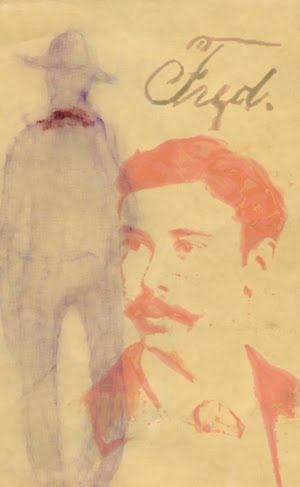When I married in 1886, we went on a homestead in Idaho. There were great expenses building fencing, clearing the sagebrush off the land, and everything that goes with building a new country. Often the two of us lived on less than a dollar a week. We could buy one hundred pounds of potatoes for fifty cents. Jackrabbits were plentiful and my husband was a good shot. Our meat diet was cottontail or bunny fried in butter.
When we had exhausted all our means on the homestead, my husband got his job back in Pocatello. Every six months, however, it was necessary to return to the ranch in order to hold it. Before we proved upon it my husband met with an accident and lost the sight of one eye. He thought if I had to take the living I could do better in some town where he could help raise a garden. We got a little home ten miles from Ogden. I made coats into capes as capes were then the fashion, and did dress-making and sewing of all sorts.
When our six months were up my husband again returned to the homestead to look after things. He wrote to me to follow [him to Idaho] as a man had decided to jump our claim if we did not return. We had two mares with colts, and I rigged up a white top buggy, filled the box with food and clothing, and a bed on top of everything, put in my five little children and on the fifteenth of September 1884 we started out.
p.7
When we reached Curlew Valley it snowed so we stayed three days at my brother's. After leaving my brother's we camped at night. I gave the children their supper then told them stories until they went to sleep.
My oldest daughter asked me recently if I remembered how the wolves howled around our camp when we were going back to Idaho to save our homestead. She said, "I think they were trying to get the colts." It was such a dreary lonely place and she was afraid of their mournful howl, but when she would mention that I would only say, "It's nothing but coyotes," and go on with the story. She thought that if I was not afraid it was all right. She says I taught her the greatest psychology in her childhood she has ever learned. "If it is anything bad the Lord won't let it hurt you. If it is anything good it won't hurt you, so don't be afraid of anything."
NOTES:
1. It is interesting how Mary Ella only refers to Fred as "my husband." Other accounts in the story mention Moses Wade her grandfather, but she never mentions her father (Wild Bill Hickman) or Fred directly. Since many names of men, besides these, are neglected, it may not have been a specific choice to omit Fred's name alone. Perhaps her new marriage also influenced this.
2. Mary Ella mentions a lot about their trying to "prove up" a homestead in Idaho. She mentions the hard toil in clearing out the land for their work. She also explains how poverty stricken they both were out there. Fred's shooting skills are noted, and how he kept shooting Cottontail to put meat into their diet.
3. It looks like the life on the homestead grew too hard with tthe lack of finances. Fred had to work in Pocatello (over at the railroad, which this account does not mention), but then had that terrible eye incident as I mentioned in prior posts. With his inability to see out of one eye, Mary Ella implies here that Fred couldn't find other manual labor as he had done throughout his life. People apparently didn't want to hire someone with poor vision, and who didn't have the healthiest build to boot. Mary Ella claims that it was Fred's suggestion that she should become the primary bread winner after this point, and that he would supplement the family's income/provisions by creating a garden. Ella did a lot of seamstress work, and she was quite excellent. My grandmother still has many nice lace tablecloths that Ella made. They moved near Ogden, UT, which is where Mary Ella's mother, Minerva Wade Hickman lived. However, they still wanted to keep their land in Idaho, and they couldn't leave the land too long or they would lose their right to possess it. The Ogden moved was out of desperation; they still wanted their Idaho home. Fred took the effort to head back and check on the land. But this was no easy for them to juggle, especially when someone else had wanted to jump their claim. Imagine being a mother throwing 5 young kids into a buggy and riding across rugged country to Idaho! The howling of those wolves certainly would have been frightening. Mary Ella mentioned staying three nights at her brother's. She had many brothers, so I am not sure which one she is referring to here.
4. She mentioned leaving in September 1884, but this must either be a typo or an error. She wasn't married until 1886, so how can she have left for Idaho with 5 kids by then? 1894 might be more likely. I will have to go through my gedcom and see if she had 5 living children by then.


